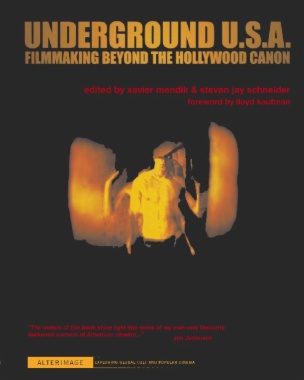Whether defined by the carnivalesque excesses of Troma studios (The Toxic Avenger), the arthouse erotica of Radley Metzger and Doris Wishman, or the narrative experimentations of Abel Ferrara, Melvin Van Peebles, Jack Smith, or Harmony Korine, underground cinema has achieved an important position within American film culture. Often defined as "cult" and "exploitation" or "alternative" and "independent," the American underground retains separate strategies of production and exhibition from the cinematic mainstream, while its sexual and cinematic representations differ from the traditionally conservative structures of the Hollywood system. Underground U.S.A. offers a fascinating overview of this area of maverick moviemaking by considering the links between the experimental and exploitative traditions of the American underground.
- Contents
- Acknowledgements
- Notes on Contributors
- Foreword
- Introduction
- 1. 'No Worse Than You Were Before': Theory, Economy and Power in Abel Ferrara's 'The Addiction'
- 2. Radley Metzger's 'Elegant Arousal': Taste, Aesthetic Distinction and Sexploitation
- 3. Curtis Harrington and the Underground Roots of the Modern Horror Film
- 4. 'Special Effects' in the Cutting Room
- 5. Real(ist) Horror: From Execution Videos to Snuff Films
- 6. A Report on Bruce Conner's 'Report'
- 7. Voyeurism, Sadism and Transgression: Screen Notes and Observations on Warhol's 'Blow Job' and 'I, a Man'
- 8. 'You Bled My Mother, You Bled My Father, But You Won't Bleed Me': The Underground Trio of Melvin Van Peebles
- 9. Doris Wishman Meets the Avant-Garde
- 10. Full Throttle on the Highway to Hell: Mavericks, Machismo and Mayhem in the American Biker Movie
- 11. The Ideal Cinema of Harry Smith
- 12. What is the Neo-Underground and What Isn't: A First Consideration of Harmony Korine
- 13. Underground America 1999
- 14. Phantom Menace: Killer Fans, Consumer Activism and Digital Filmmakers
- 15. Film Co-Ops: Old Soldiers from the Sixties Still Standing in Battle Against Hollywood Commercialism
- 16. 'Gouts of Blood': The Colourful Underground Universe of Herschell Gordon Lewis
- 17. Theory of Xenomorphosis
- 18. Visions of New York: Films from the 1960s Underground
- 19. A Tasteless Art: Waters, Kaufman and the Pursuit of 'Pure' Gross-Out
- Notes
- Index

